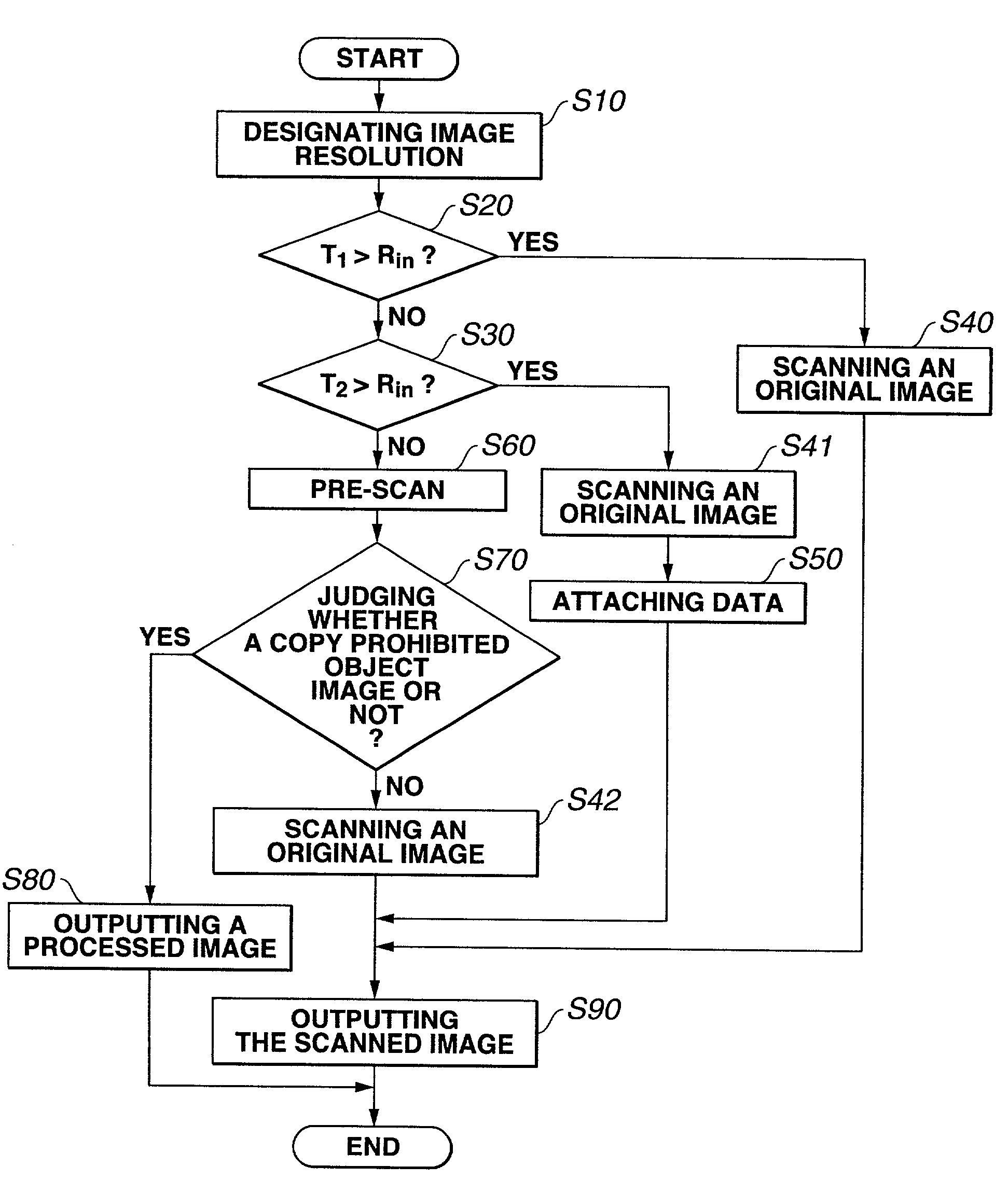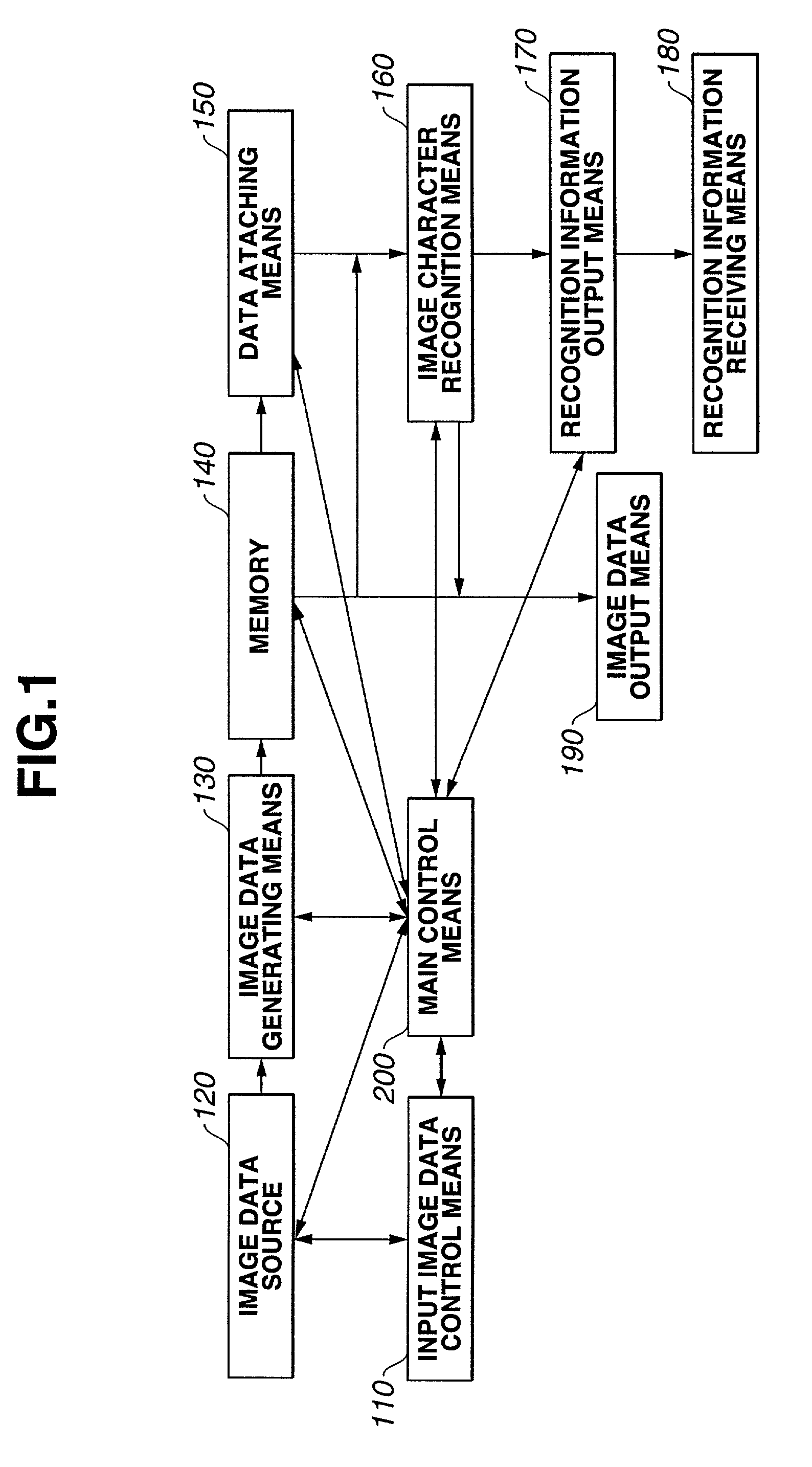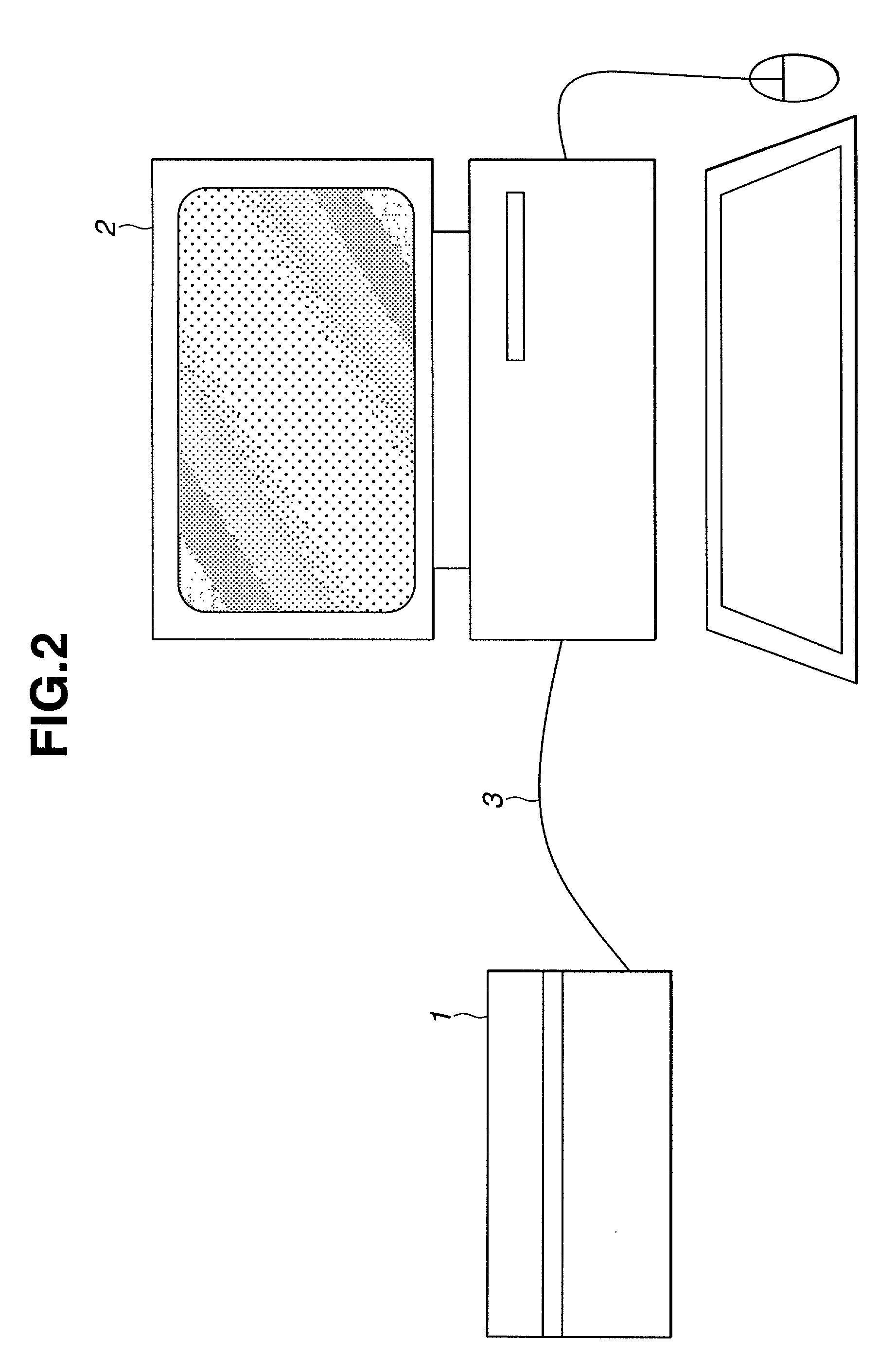Image processing apparatus, image processing method and a computer program product for judging whether image data include specific information related to copy protection
- Summary
- Abstract
- Description
- Claims
- Application Information
AI Technical Summary
Benefits of technology
Problems solved by technology
Method used
Image
Examples
first embodiment
The First Embodiment
[0029]Information indicating that an object is copy-prohibited is attached to an original by using a technology called digital watermark in one preferable embodiment of this invention.
[0030]An original of the copy-prohibited object is formed by printing the image data with the attached information indicating that the object is copy-prohibited. The digital image data, with its attached information indicating that the object is copy-prohibited, is made by attaching second digital information indicating that the object is copy-prohibited to the first digital information which is a source of the printing object. The digital watermark may be any kind of digital watermark, such as one attached to a specific frequency of image information as invisible information or visible information that is difficult for human eyes to see, like yellow dots.
[0031]In an inexpensive color scanner or printer, it is preferable to carry out counterfeit prevention of a copy-prohibited objec...
second embodiment
[0048]The judgment of whether an object is copy-prohibited, in step 70 of the first embodiment, is performed using photo electrical converted image data generated from a print object's added information, using digital water mark, to indicate whether the object is copy-prohibited.
[0049]For the judgment of whether an object is copy-prohibited, in step 70, it is possible to use another method. For example, an original may be judged based on a color spectrum distribution based on image data (R,G,B data for each pixel) generated by scanning the original and a comparison of the color spectrum distribution with copy-prohibited object data stored in a ROM or a comparison of an image pattern of a part of the original (or the entire original) with a copy-prohibited object pattern stored in a ROM. The result of the judging is an evaluation value as to whether the original is a copy-prohibited object or not.
[0050]In this case, the evaluation value (e.g., the sum of the absolute value of the com...
third embodiment
[0051]In the first embodiment and second embodiment, if an original is not judged as a copy-prohibited object, the original image is output without information attached to the original image. It is possible to attach information to the original image in step 51, which is the same as step 50 and performed after step 42. A flowchart of this process is shown in FIG. 5. FIG. 5 and FIG. 4 are the same except for step 51.
PUM
 Login to View More
Login to View More Abstract
Description
Claims
Application Information
 Login to View More
Login to View More - R&D
- Intellectual Property
- Life Sciences
- Materials
- Tech Scout
- Unparalleled Data Quality
- Higher Quality Content
- 60% Fewer Hallucinations
Browse by: Latest US Patents, China's latest patents, Technical Efficacy Thesaurus, Application Domain, Technology Topic, Popular Technical Reports.
© 2025 PatSnap. All rights reserved.Legal|Privacy policy|Modern Slavery Act Transparency Statement|Sitemap|About US| Contact US: help@patsnap.com



